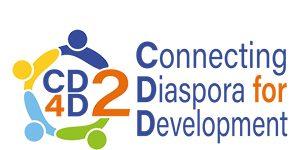The EU delivered a communication on the Delivery of the European Agenda on Migration. Below is a summary of the communication in relation to Migration and Development. The document not only mentioned utilizing diaspora for development but also engaging diaspora on national and EU level to reduce the stay of irregular migrants.
Summary
In 2015, the European Commission presented its European Agenda on Migration to address longstanding structural weaknesses in its migration policy and to cater for the refugee crisis.
Concrete results have come out of this agenda, for example in 2016 the EU resettled or granted asylum to 720 000 refugees. More can be done however; to continue this comprehensive approach the needs of host societies and EU citizens must be acknowledged, as well as creating greater collaboration with global partners.
Irregular migration and uncontrolled flows must be replaced by safe and well managed practices. One solution would be to tackle irregular migration at its root.
When it comes to addressing root causes, the EU and its Member States provide vast amounts of development assistance to help boost partner countries’ economy, to create youth employment, to ensure food security and access to energy, and to encourage good governance and respect of human rights. In this light, the Commission proposed a new approach to engage with countries of origin and transit: the Partnership Framework approach, which has the dual objective of fighting root causes of irregular migration through development cooperation. Adding to this, creating a better understanding of push and pull factors is crucial for combating irregular migration.
In this context, the Commission will include the relevant diaspora within the EU not only because they play an important role in the development of their countries of origin but also because they can be mobilized to support measures in their country of residence and at EU level to reduce the irregular stay of migrants.
Since the adoption of the European Agenda on Migration, the EU has been building towards an external migration policy, complementing our broader external and development engagement in order to strive for joint management of migration with countries of origin and transit.
What’s more, if developed adequately projects that encourage legal migration pathways could lead to safer forms of human mobility and reduce irregular migration, as well as, address the issue of readmission and return of irregular migrants. Such pilot projects have been suggested for the future Migration Agenda. These pilot projects would be explored with third countries and the involvement of the private-sector, in particular economic and social stakeholders in which migration is presented as a means to address labour shortages



 The Ethiopian Horticulture Industry
The Ethiopian Horticulture Industry